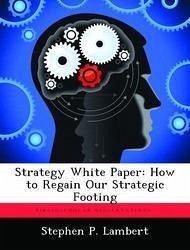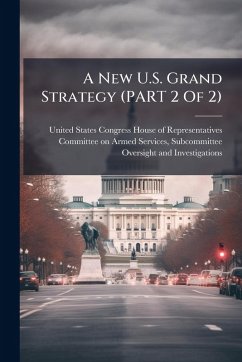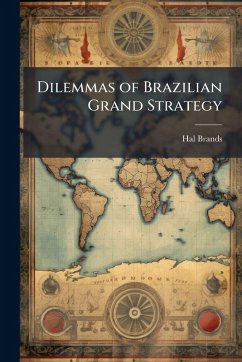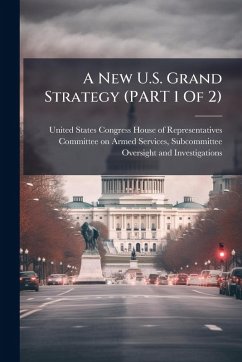
Strategy White Paper
How to Regain Our Strategic Footing
Versandkostenfrei!
Versandfertig in über 4 Wochen
17,99 €
inkl. MwSt.

PAYBACK Punkte
9 °P sammeln!
This paper proceeds from the premise that the 2003 invasion of Iraq can only be seen as part of a broader history of American engagement throughout the Middle East and the so-called Muslim world. Among other events, that history harkens back to the role that the United States played in helping to create the modern Saudi state, the tortured tale of U.S. engagement in the Israeli-Palestinian conflict, the clandestine U.S. support of the Islamic revolutionary Mujahideen in Afghanistan in their fight against the Soviets, and the more recent U.S. involvement in the 1991 and 2003 Gulf wars. The evol...
This paper proceeds from the premise that the 2003 invasion of Iraq can only be seen as part of a broader history of American engagement throughout the Middle East and the so-called Muslim world. Among other events, that history harkens back to the role that the United States played in helping to create the modern Saudi state, the tortured tale of U.S. engagement in the Israeli-Palestinian conflict, the clandestine U.S. support of the Islamic revolutionary Mujahideen in Afghanistan in their fight against the Soviets, and the more recent U.S. involvement in the 1991 and 2003 Gulf wars. The evolution of American strategy throughout the region cannot be viewed disconnectedly through the lens of individual administrations or policy decisions. Previous decisions have given birth to unintended consequences because policy makers failed to consider the long-term or strategic impact of their response to the crises of the day. This work has been selected by scholars as being culturally important, and is part of the knowledge base of civilization as we know it. This work was reproduced from the original artifact, and remains as true to the original work as possible. Therefore, you will see the original copyright references, library stamps (as most of these works have been housed in our most important libraries around the world), and other notations in the work. This work is in the public domain in the United States of America, and possibly other nations. Within the United States, you may freely copy and distribute this work, as no entity (individual or corporate) has a copyright on the body of the work. As a reproduction of a historical artifact, this work may contain missing or blurred pages, poor pictures, errant marks, etc. Scholars believe, and we concur, that this work is important enough to be preserved, reproduced, and made generally available to the public. We appreciate your support of the preservation process, and thank you for being an important part of keeping this knowledge alive and relevant.












